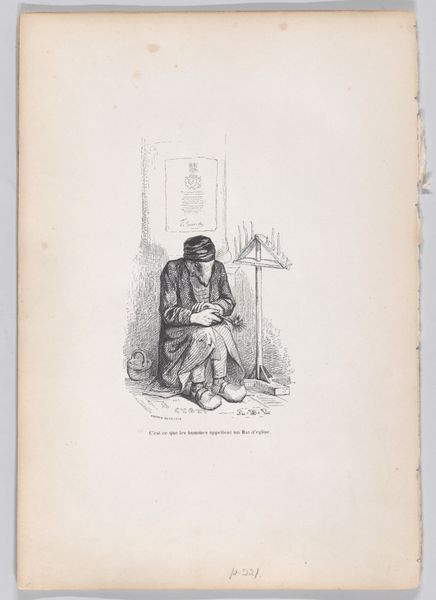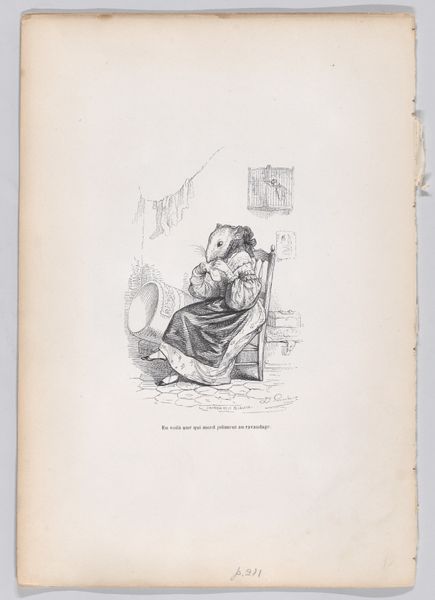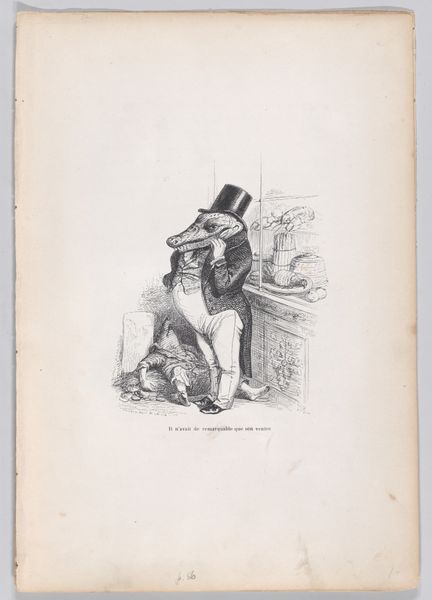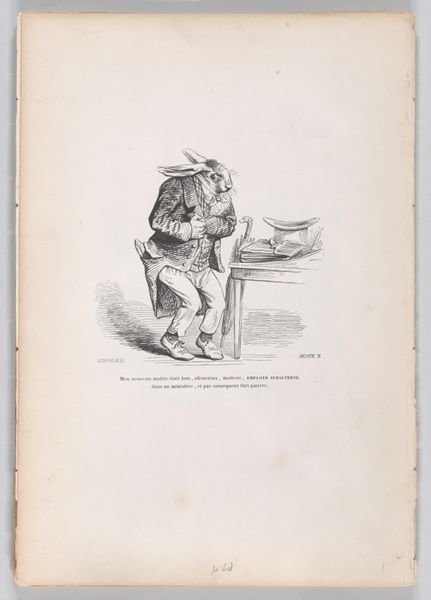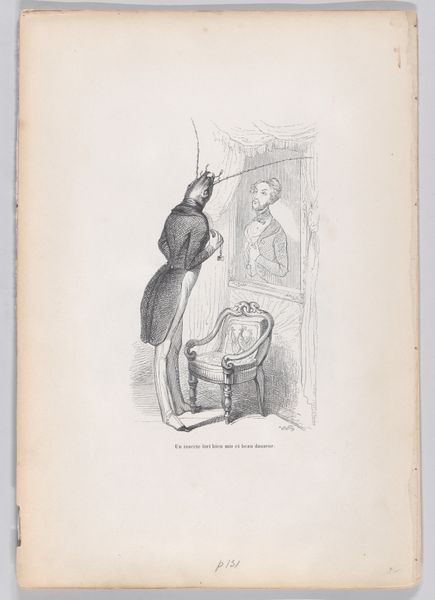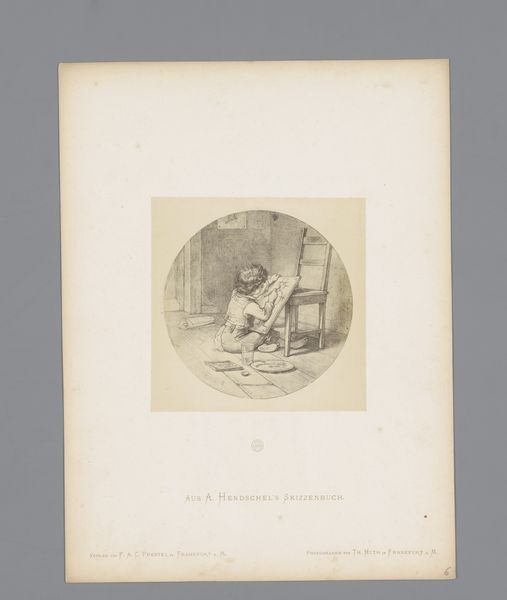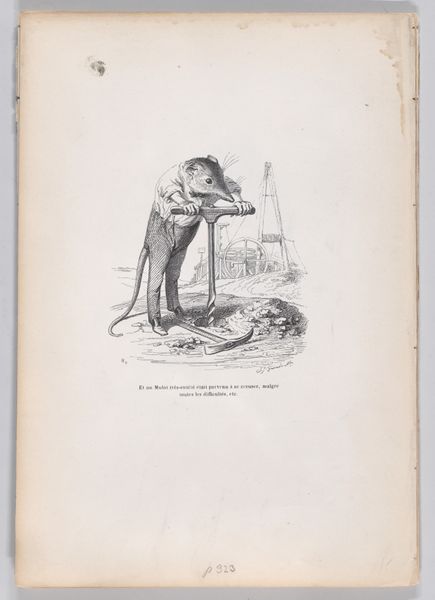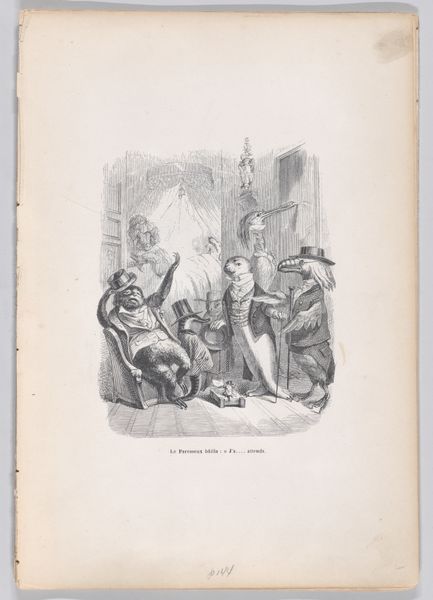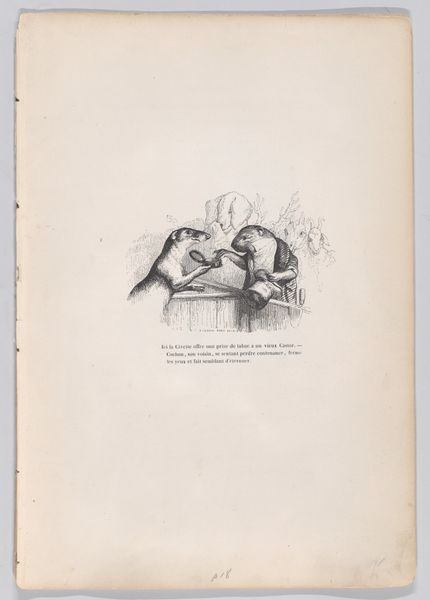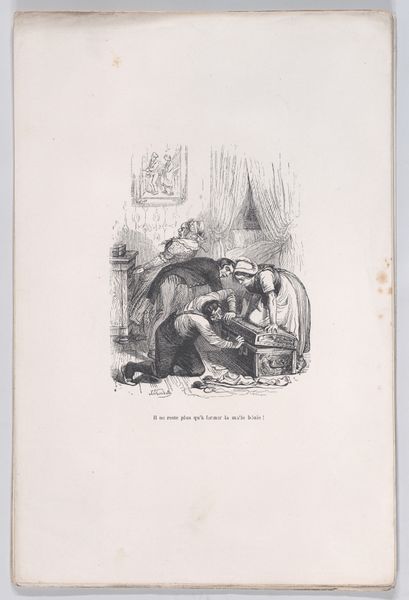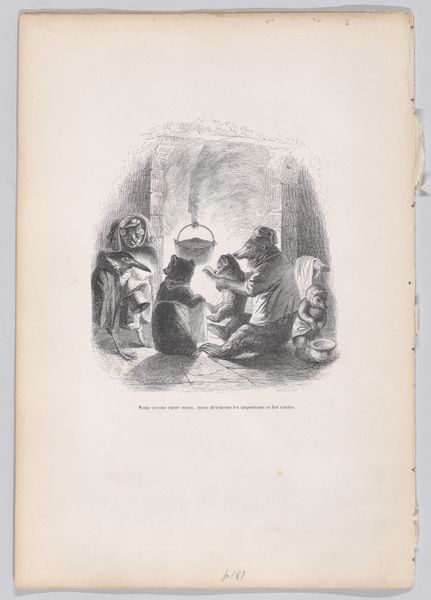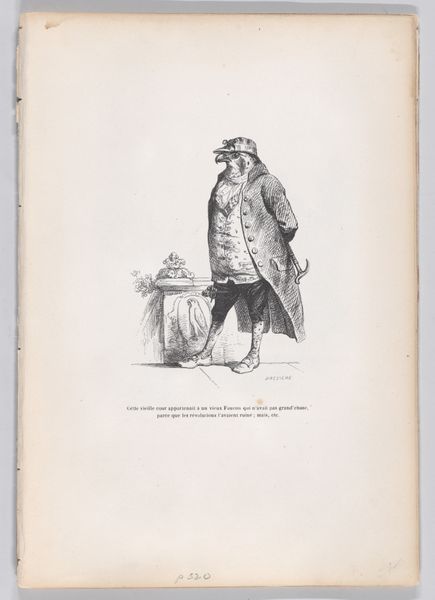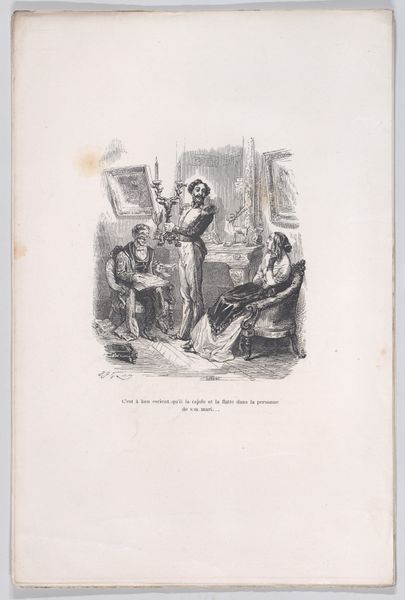
"The favorite object of his studies is the collection of Idylles by Madame Deshoulières" from Scenes from the Private and Public Life of Animals 1832 - 1852
0:00
0:00
drawing, print, pencil
#
drawing
#
narrative-art
# print
#
figuration
#
coloured pencil
#
romanticism
#
pencil
#
genre-painting
Dimensions: Sheet: 10 5/16 × 7 3/16 in. (26.2 × 18.2 cm)
Copyright: Public Domain
Curator: Ah, yes, “The favorite object of his studies is the collection of Idylles by Madame Deshoulières” created by J.J. Grandville sometime between 1832 and 1852. It's currently part of the Met's collection. It's a fascinating piece; primarily a print and drawing using pencil. Editor: It is…unsettling, in the most captivating way. A wolf, I presume, chained to the wall of what appears to be a prison cell, nose buried in a book of idyllic poetry. The contrast is arresting, isn't it? Is that romantic irony, Grandville-style? Curator: Indeed! Grandville was known for his anthropomorphic satire. In 19th century France, there was this real tradition of social critique through animal allegory, if you will. This fellow embodies that. Note the figure chained in his prison looks longingly towards some sentimental, pretty idea. Editor: I am caught by the fact that the work’s materials include both drawing and print, to me, this emphasizes the divide between individual expression, versus something mass produced for public consumption and perhaps control. It raises questions about knowledge, constraint, and perhaps, the futility of escapism? Curator: I agree. Think about the social climate then. Political unrest, industrialization—it’s no wonder that artists gravitated towards using animals to comment on human follies, the imprisonment we inflict upon ourselves, you could say. There is even someone gazing through the prison window! A silent warden, perhaps, scrutinizing our poor, captive wolf. Editor: He does seem very caught off guard in his private, literary moment. So what kind of reception did Grandville’s brand of humorous social criticism have? Curator: Varied, of course. He was admired for his inventive, whimsical imagery, and he faced criticism for his at times biting satire. However, his style paved the way for others, you could say. And it resonates today. I certainly hope our dear wolf eventually gets to read in a meadow somewhere. Editor: I second that. Maybe even *write* his own poems there, unfettered. The charm and pathos are unmistakable, reminding us how art, even in its lightest form, holds up a mirror to society, then and now. Curator: A powerful image, brought to life with wit and a simple, yet telling composition.
Comments
No comments
Be the first to comment and join the conversation on the ultimate creative platform.
